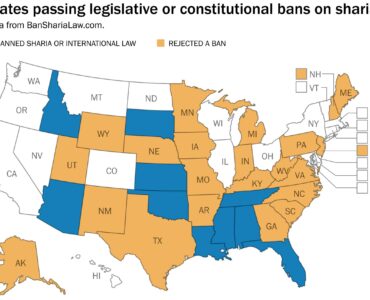
The Islamization Of Africa
The process of Islamization began when Muslims’ prayers and amulets succeeded where the local priests failed. Rulers were the early recipients of Islamic influence, and the royal courts mediated Islamic influence to the common people. Pre-Islamic customs persisted even at the courts of rulers who were fully committed to Islam, however. In about 1500 the rulers of Songhay, Kano, and Bornu attempted to reform Islam, with limited results. Most scholars collaborated with the rulers, but the more radical scholars withdrew from the centers of political power and established autonomous religious communities, enclaves of rural scholarship based on slave farming, where the spirit of Islamic militancy was cultivated. Pre-Islamic customs that had persisted for centuries and been accepted as part of the accommodation of Islam became unforgivable in the view of militant Muslims. Rulers who had previously been considered Muslims were declared infidels, and became the target for jihad.
In Sudan, three major states developed in the grasslands south of Nubia since 1500 — Funj, Darfur, and Wadai — where Islam was corporate and communal. All obedient subjects were considered Muslims, whatever their way of life, while disobedience implied rejection of the corporate Islam of the community, and therefore apostasy. Toward the end of the seventeenth century a new urban-based middle class emerged that assumed an entirely new cultural and ethnic identity as Arabs. Observance of the rules of Islam became the criterion to evaluate a person’s status as a Muslim. The popular Islam of the holy men and the more conformist Islam of the urban population were brought together by reformed brotherhoods that developed in Sudan since the last quarter of the eighteenth century.
It was only in the highlands of Ethiopia that Christianity survived centuries of confrontation with Islam. Ethiopia’s continuous military campaigns encouraged the development of Islamic militancy, which in 1529 took the form of a jihad led by Ahmad Gran. The weakening of both the Christian state and the Muslim principalities laid the land open to the mass migrations of the pastoral Oromo people into the fertile highlands. By the eighteenth century, the Oromo gradually became Muslim and played an active role in the expansion of Islam in the region.
The accelerated expansion of Islam on the coast of East Africa occurred in the thirteenth century. Muslims gradually became the majority in settlements that enjoyed the prosperity of an ever-growing trade. By the sixteenth century, when the first Europeans arrived, Islam had already achieved majority status in the coastal towns. The arrival of the Omanis in the eighteenth century, and the establishment of the Zanzibar sultanate in the 1820s, brought about the creation of more formal Islamic institutions on the East African coast.
The Islamization Of Africa
803 – 031
Home
Last Updated: 04/2022
See COPYRIGHT information below.



